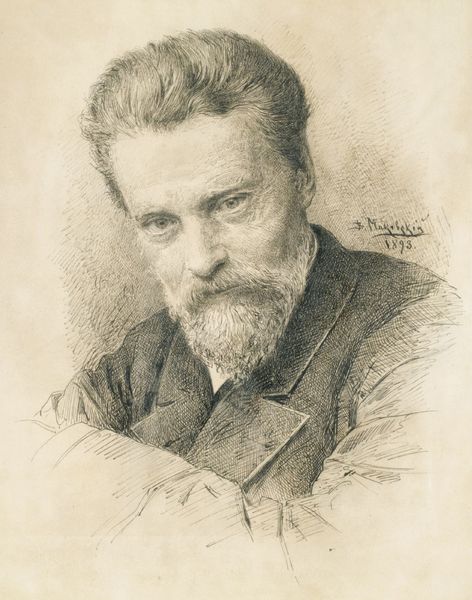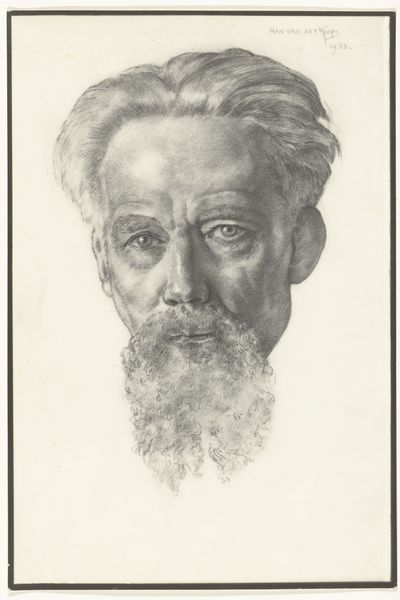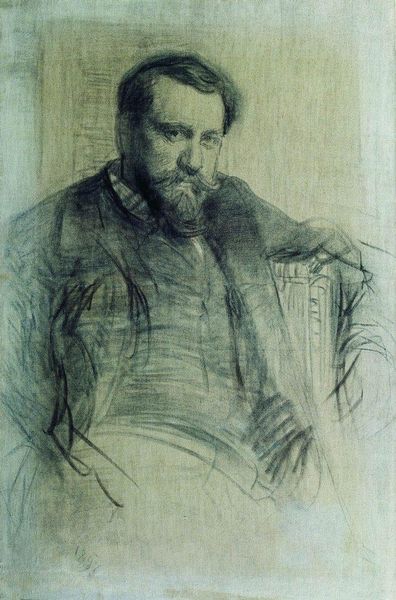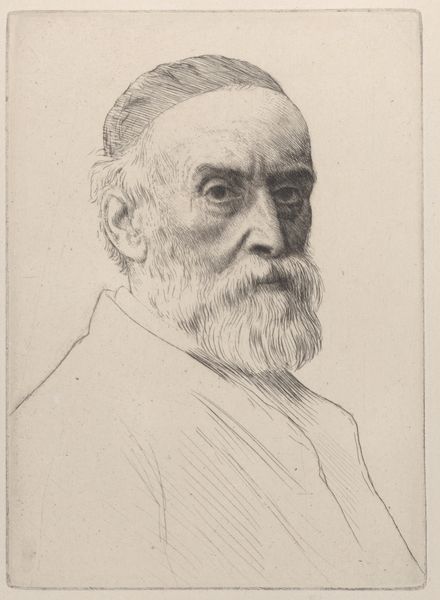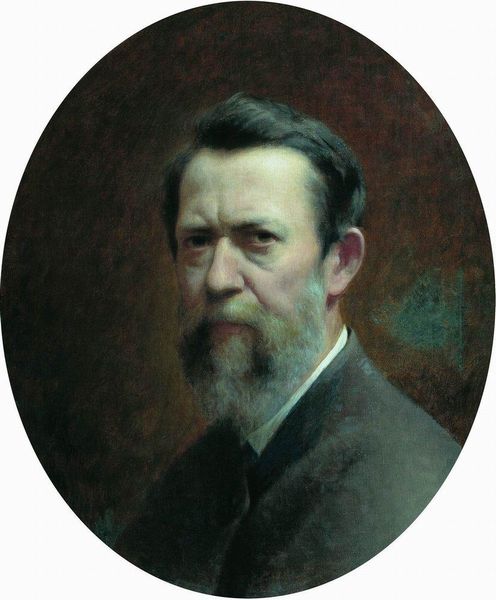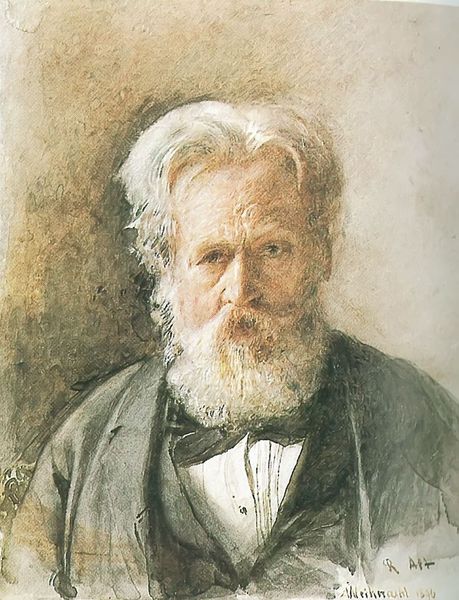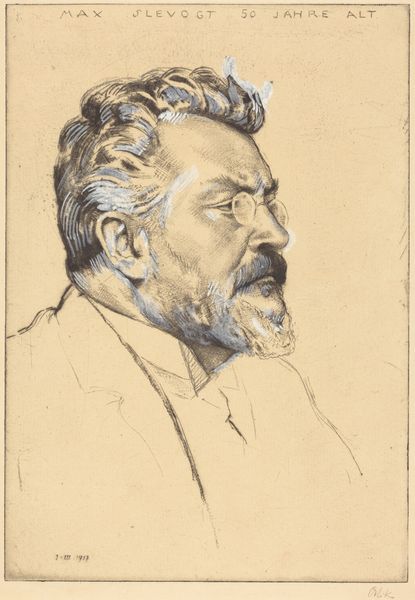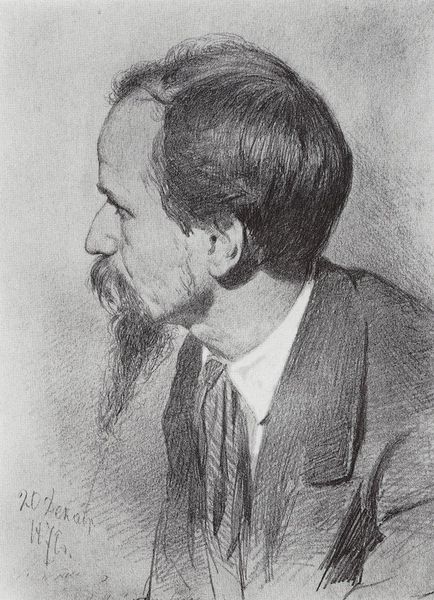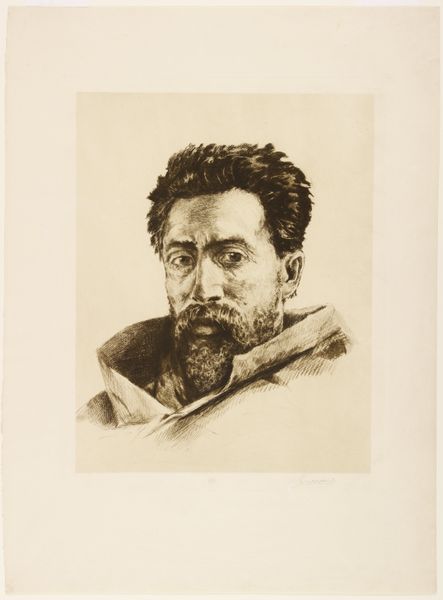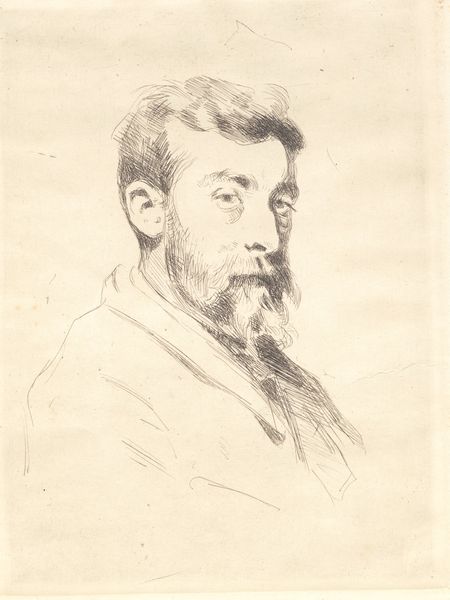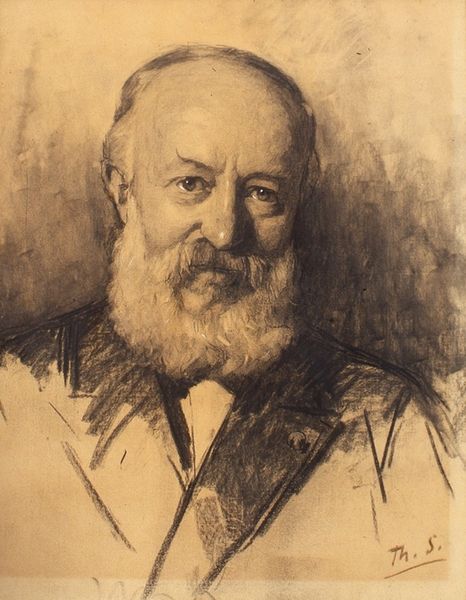
drawing, pencil
#
portrait
#
drawing
#
pencil
#
expressionism
#
russian-avant-garde
#
realism
Copyright: Public domain
Editor: This is Boris Kustodiev’s 1921 pencil drawing, “Portrait V.A. Kastalsky.” There’s a striking realism to the face, but something about the ethereal quality of the drawing feels almost… spiritual. What stands out to you about this piece? Curator: The "spiritual" sensation arises, I suspect, from a carefully cultivated, highly intellectual style that draws on conventions of iconic representation, refined to express psychological intensity. Note how Kustodiev captures not just Kastalsky's likeness, but his essence. Observe the detail around the eyes; how would you describe their expression? Editor: Thoughtful, definitely, perhaps a bit melancholic? There's a depth there that hints at inner contemplation. Curator: Exactly. And this is where the layers of meaning begin to accumulate. Kastalsky, a composer of sacred music, lived through the tumult of the revolution. Do you notice any visual cues that communicate his values and social position in that era? Editor: I suppose the beard might hint at tradition, or perhaps an older generation rooted in pre-revolutionary Russia? Curator: Indeed. Beards carry weight—symbols of wisdom, faith, and even resistance during a period of radical change. Kustodiev emphasizes that weight, rooting him in an identifiable cultural memory despite his placement in the Russian avant-garde movement. It represents stability when everything else changed in his lifetime. Editor: So, it's more than just a portrait; it's a study in cultural and personal resilience, communicated through a constellation of visual signifiers. Curator: Precisely. It’s a quiet testament to the enduring power of tradition and faith. Editor: That's incredible! I'll never look at a portrait the same way again. Thanks!
Comments
No comments
Be the first to comment and join the conversation on the ultimate creative platform.
